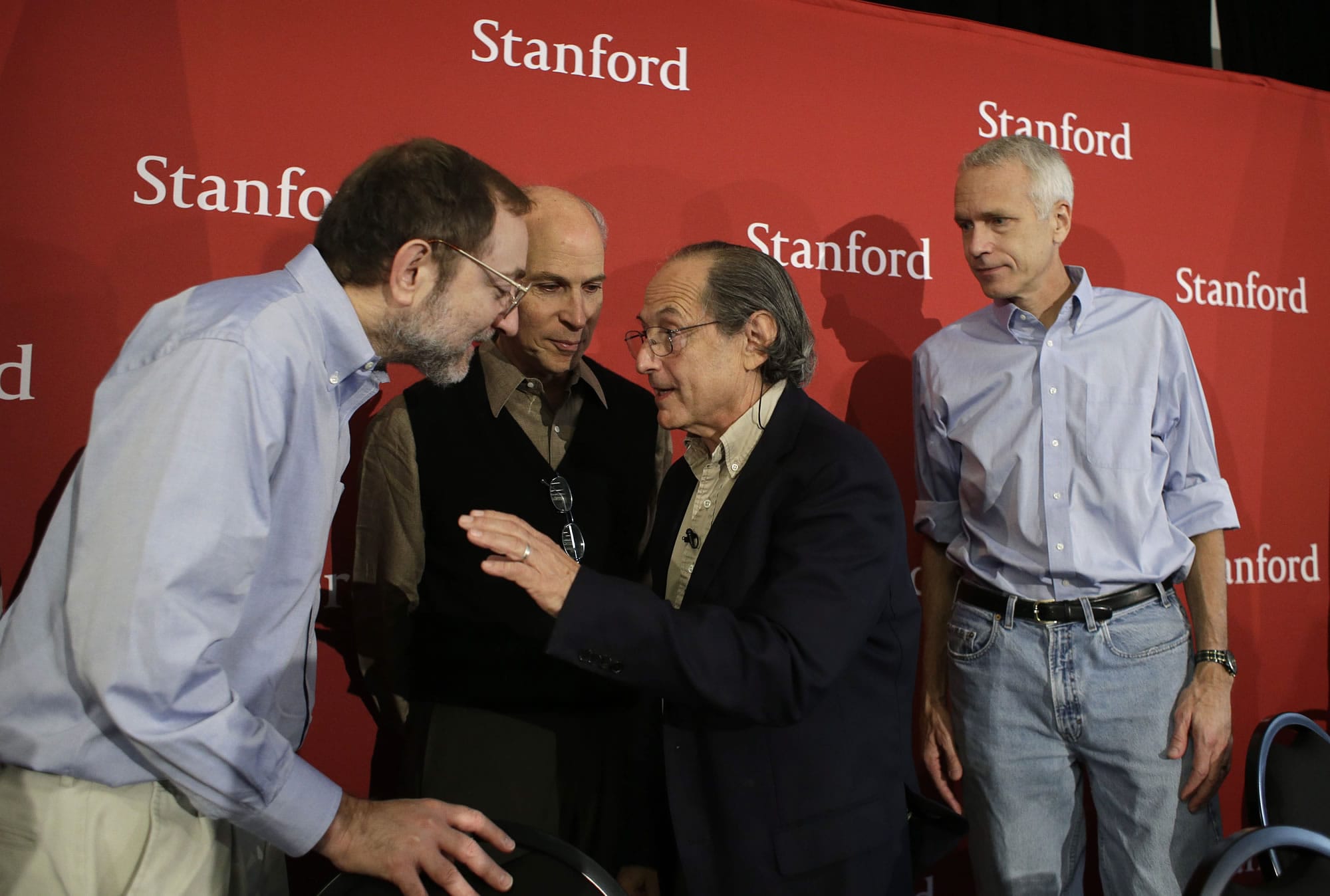NEW YORK — Three U.S.-based scientists won a Nobel Prize on Wednesday for developing a powerful new way to do chemistry on a computer.
They pioneered highly sophisticated computer simulations of complex chemical processes, giving researchers tools they are now using for a wide variety of tasks, such as designing new drugs and solar cells.
“Today the computer is just as important a tool for chemists as the test tube,” the Swedish Academy of Sciences said in announcing this year’s $1.2 million chemistry prize. “Simulations are so realistic that they predict the outcome of traditional experiments.”
As academy secretary Staffan Normark put it: “This year’s prize is about taking the chemical experiment to cyberspace.”
The prize honored research done in the 1970s by Martin Karplus, Michael Levitt and Arieh Warshel.
All three scientists became U.S. citizens. Karplus came to the U.S. with his family as Jewish refugees from Nazi-occupied Austria in 1938. The 83-year-old U.S. and Austrian citizen splits his time between the University of Strasbourg in France and Harvard University.
Levitt, 66, was born in South Africa and is a British, U.S., and Israeli citizen. He is a professor at Stanford University. Warshel, 72, was born in Israel and is a U.S. and Israeli citizen affiliated with the University of Southern California in Los Angeles. Levitt is a biology professor, while the two other winners are chemistry professors.
Levitt told The Associated Press the award recognized him for work he did when he was 20, before he even had his Ph.D.
“It was just me being in the right place at the right time and maybe having a few good ideas,” he said by telephone from his home in California. He joked that the biggest immediate impact of the prize would be his need for dance lessons before appearing at the Nobel banquet.
“When you go to Stockholm, you have to do ballroom dancing,” Levitt said. “This is the big problem I have right now.”
Karplus told the AP the 5 a.m. call from the Nobel judges had him worried that the caller might be bearing bad news. “Usually you think when you get a call at 5 o’clock in the morning it’s going to be bad news, you know, something’s happened,” he said.
Warshel, speaking by telephone to a news conference in Stockholm, said he was “extremely happy” to be awakened in the middle of the night in Los Angeles to get the good news.
The three men were honored for blending two previous approaches for simulating molecules and chemical reactions on computers. One was quantum physics, which applies on the scale of an atom, and the other was classical Newtonian physics, which operates at larger scales.
Classical physics could simulate large molecules but not chemical reactions. Quantum physics could give realistic results for reactions but couldn’t be used with large molecules because the equations were too complex to solve.
The blended approach, which uses quantum mechanics only for key parts of molecules and classical physics for the rest, provides the accuracy of the quantum approach with manageable computations.
Working together at Harvard in the early 1970s, Karplus and Warshel developed a computer program that brought together classical and quantum physics. Warshel later joined forces with Levitt at the Weizmann Institute of Science in Israel and at the University of Cambridge in Britain to develop a program that could be used to study enzymes.
Jeremy Berg, a professor of computational and systems biology at the University of Pittsburgh, said the winning work gives scientists a way to understand complicated interactions that involve thousands to millions of atoms.
“There are thousands of laboratories around the world using these methods, both for basic biochemistry and for things like drug design,” said Berg, former director of the National Institute of General Medical Sciences in Bethesda, Md.
Many drug companies use computer simulations to screen substances for their potential as medicines, an approach that lets them focus their chemistry lab work on those that look promising, he said.
James Skinner, director of the Theoretical Chemistry Institute at the University of Wisconsin-Madison, said the approach pioneered by the winners can be used to analyze such things as how drugs bind to the molecules they target in the body, or how large molecules fold.
Beyond that, such simulations can be used to design materials with specific characteristics, such as those used in airplanes, he said.
“This has led to greater understanding (of) problems that couldn’t be solved experimentally,” said Marinda Li Wu, president of the American Chemical Society.
Earlier this week, three Americans won the Nobel in medicine for discoveries about how key substances are moved around within cells, and the physics award went to British and Belgian scientists whose theories help explain how matter formed in the universe after the Big Bang.
The Nobel in literature will be announced on Thursday, the Nobel Peace Prize on Friday and the economics prize on Monday.



